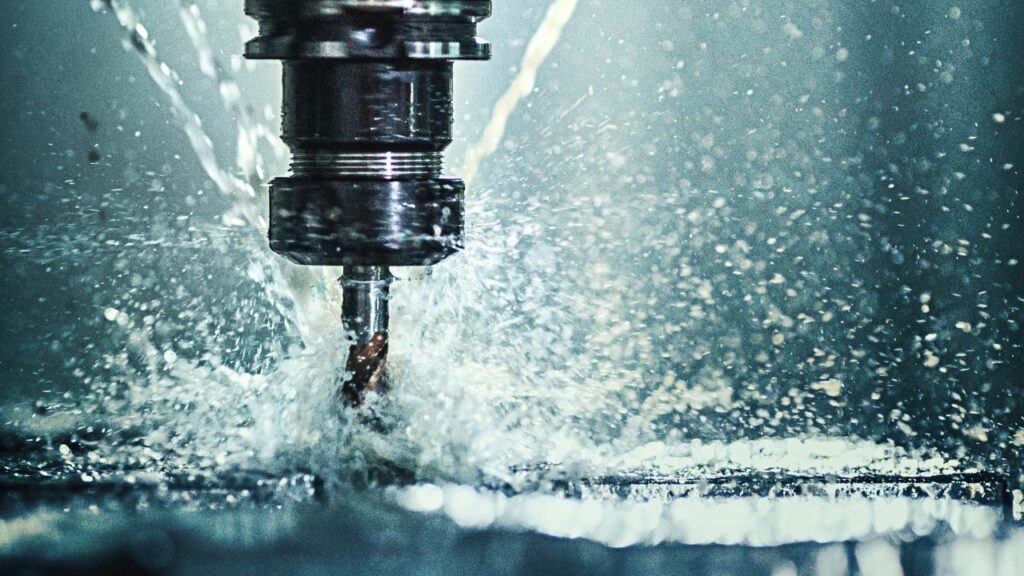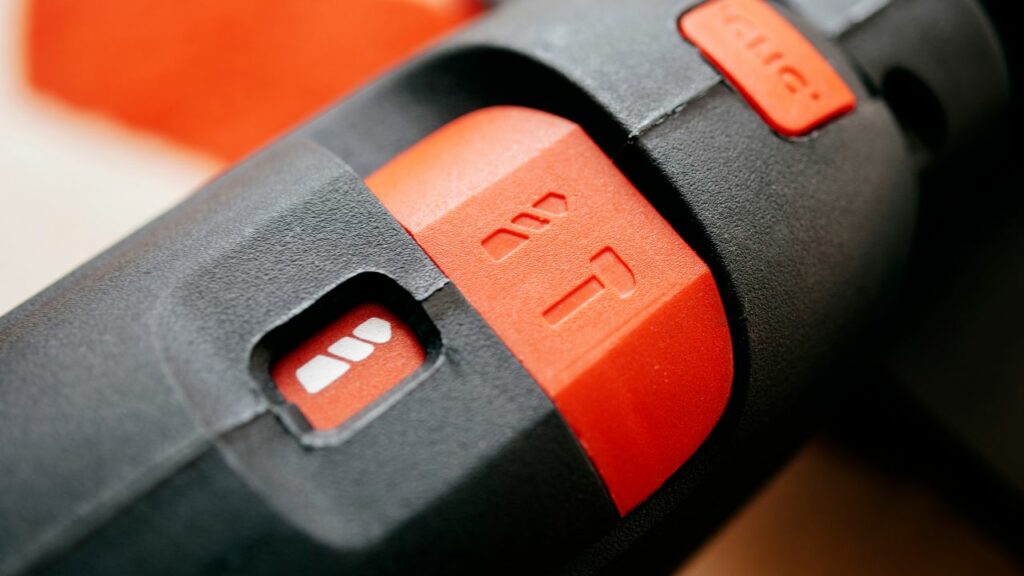Last Updated on October 16, 2023 by Pro Handyman Australia – Editorial Team
Understanding the Hammer Drill
A hammer drill, often known as a rotary hammer, possesses the unique ability to offer both a rotary function and a forward thrusting motion. This combined feature enables the drill-bit to rotate and also vibrate in a front-to-back motion, making it especially valuable for boring into challenging materials such as concrete, brick, stone, or tile. As you explore the world of tools, understanding the different types of saws and types of power saws and their specific functionalities, like that of hammer drills, can enhance your craftsmanship.
Functional Modes of Hammer Drills: Choose Your Mode Wisely
Modern advanced hammer drills usually present three distinct operating modes tailored to a variety of tasks:
- Hammer Mode: Emphasizing on delivering a direct impact, much like a jackhammer.
- Drill Mode: When activated, this mode mimics the rotary function present in standard drills, making it perfect for regular drilling tasks.
- Combined Mode: Merges both hammer and drill functions, offering a potent mix of rotational and thrusting forces.
Things to Keep in Mind
There are a few considerations to bear in mind when pondering the purchase of a hammer drill or a cordless hammer drill:
- Cost: Due to the intricacy of their design and the need for robustness, hammer drills usually come with a higher price tag compared to regular drills. If your tasks primarily involve drilling holes through standard materials, a regular drill might serve the purpose without denting your pocket.
- Size and Weight: In terms of physical dimensions, hammer drills are generally bulkier and weigh more than their regular drill counterparts. Their design frequently incorporates a side handle, aiding users in maneuvering the tool with greater control.
Hands-On User Experience with Hammer Drills
When it comes to understanding the versatility of a hammer drill or a cordless hammer drill, there’s no better way than to hear from those who’ve used them firsthand.

Take the case of the TOPEX 1010W. User John Thompson, an avid DIY enthusiast, shared his experience: “I’ve been using the TOPEX 1010W for a year now, both for drilling holes into concrete and for regular woodworking projects. By simply switching off the hammering function, it felt just like any other regular drill I’ve used. But, the added power when I needed it? Simply unparalleled!”

Meanwhile, Sarah, a professional contractor, spoke highly of the Bosch 06039D4140 model: “The Bosch 06039D4140 is a beast when it comes to hammering into hard surfaces, but it’s the drill’s versatility that surprises me. On one project, I forgot my regular drill, but the Thunderbolt saved the day. With its hammer function turned off, it worked perfectly as a regular drill.”
In the debate of rotary hammer vs hammer drill, these real-life experiences prove the adaptability of hammer drills in various scenarios. They’re not just for heavy-duty tasks but can be quite handy for simpler projects as well.
Comparisons: Hammer Drills Head-to-Head
To further shed light on how hammer drills fare when compared to each other, let’s delve into an in-depth analysis of three popular models.
| Model Name | Power (W) | Battery Life (Hours) | Weight (kg) | Price ($) |
|---|---|---|---|---|
| TOPEX 1010W | 750 | 2 | 2.5 | 149 |
| Bosch 06039D4140 | 800 | 2.5 | 3 | 165 |
| BAUMR-AG Hammer Drill | 780 | 2.2 | 2.8 | 155 |
While the Bosch 06039D4140 boasts the most power and battery life, it’s also the heaviest among the three, which might not be ideal for extended usage. On the other hand, the TOPEX 1010W offers a balanced blend of power, weight, and affordability. The BAUMR-AG Hammer Drill stands out for those who prioritize a middle-ground option, balancing both price and performance.
Understanding the Mechanics of Different Types of Drills
Hammer Drill: The Power of Combined Actions
A hammer drill derives its name from the dual mechanism it employs. This tool simultaneously rotates and employs a gear-driven cam to produce a linear striking motion along the drill bit’s path. This makes it highly effective for drilling through hard materials such as brick, concrete, and cinder blocks. However, for making holes in other materials like wood, plastic, or metal, it’s essential to use a different drill bit and disengage the hammering action. However, despite the prowess of certain heavy-duty models that can drill through thick walls, using a hammer drill on wood, plastic, or metal can be counterproductive. To drill these materials, it’s essential to disengage the hammering action. While many hammer drills provide this option, certain models do not.

Impact Driver: Harnessing Rotational Energy
In the debate of hammer drill vs impact driver, it’s essential to understand their distinct functionalities. An impact driver, despite its name suggesting similarity to a hammer, operates differently. This tool primarily focuses on providing enhanced rotational force or torque. Within the tool’s structure, there’s a mechanism that releases a significant increase in force aligning with the chuck’s rotation, beneficial for hard materials. The striking difference here is that the force aligns with the chuck’s rotation instead of moving linearly along the drill bit. The primary purpose of this design is to drive or undo screws and fasteners. Whereas early versions of impact drivers were more about raw power, contemporary models offer more versatility with adjustable speeds.
Cordless Drill/Driver: The Art of Rotation and Control
Among the three, the cordless drill/driver has the most straightforward mechanism—it’s purely rotational. But its unique feature lies in its clutch system. While small hammer drills can drive screws, many are too potent and bulky for such tasks. On the other hand, impact drivers excel in heavy-duty driving but might not be suitable for precision tasks. The clutch in a cordless drill/driver lets users control the torque applied to a screw. When the predetermined torque limit is reached, the clutch activates, stopping the chuck from rotating. This mechanism proves invaluable when working with softer materials like wood or drywall, ensuring screws aren’t driven too deep or through the material entirely.
Dive into Drill Chucks, Bits, and Materials
Hammer Drills: A Firm Grip for Heavy Duty Work
While many of these are keyless for convenience, certain models, preferably from the same brand, provide a firmer grip on the drill bit. A masonry bit designed for these drills, especially when working on concrete, is crucial. This type of drill bit has a unique tip design tailored to chip away at surfaces as it rotates, making it efficient for making holes in tough surfaces. Although general-purpose masonry bits designed for these drills possess the familiar round shanks, similar to those used for wood or metal drilling, they are distinct in their tip design. It’s worth noting that when you drill holes, the spiral flutes situated behind the tip don’t cut; their primary role is to direct waste away.
Although general-purpose masonry bits designed for hammer drills possess the familiar round shanks, similar to those used for wood or metal drilling, they are distinct in their tip design. The tip is broader, tailored to chip away at surfaces as it rotates. It’s worth noting that the spiral flutes situated behind the tip don’t cut; their primary role is to direct waste away from the drilling site. SDS drill bits, while similar in many aspects, are crafted with a shank that aligns with the appropriate SDS chuck, ensuring a tighter grip for intensive drilling tasks.
Impact Drivers: Versatility in a Compact Package
For those looking to expand the capabilities of their impact drivers, especially when working on concrete, accessories tailored to work with specific drill bits are available. Though using an impact driver for drilling might lack the precision of a regular cordless drill, it provides a solution for those who prefer a single-tool approach for sporadic needs. Cheaper alternatives tailored for standard drill/drivers might seem enticing but can wear out swiftly or even break when exposed to the force of an impact driver. For those looking forward to expanding the capabilities of their impact drivers, accessories such as three-jaw drill chucks, right-angle adapters, and hole saws are available, providing a solution for when you need to drill holes.
A myriad of shapes are available for driving bits, thus enabling impact drivers to work with a wide array of fasteners. Straight, Philips, and Torx are perhaps the most ubiquitous, but other options are available for diverse driving requirements. Socket adapters and different socket sizes are also on offer, transforming impact drivers into tools compatible with nuts and bolts.
It is really important to select “impact ready” bits. Engineered to withstand the power of an impact driver, these bits are a worthy investment. Cheaper alternatives tailored for standard drill/drivers might seem enticing but can wear out swiftly or even break when exposed to the force of an impact driver. For those looking forward to expanding the capabilities of their impact drivers, accessories such as three-jaw drill chucks, right-angle adapters, and hole saws are available.
Cordless Drill/Drivers: The All-Rounder
The cordless drill/driver can be equipped with a variety of drill bits. When drilling into concrete or similar hard materials, it’s crucial to select the appropriate masonry bit. The cordless drill/driver stands out as an essential, all-purpose tool ideal for various drilling and driving tasks. Beyond drill holes and driving screws, this tool can be equipped with an array of attachments that exponentially expand its range of applications. For tasks that demand a hammer drill mode, there are options available that help ensure a precise application. From tasks as simple as installing a doorbell to the more labor-intensive DIY projects like setting up shelves on drywall or assembling contemporary furniture, this tool does it all with the appropriate bit.
A plethora of drill bits can be employed, permitting users to create holes in a multitude of materials, including wood, plastic, and metal. The range spans from basic round drills to specialized bits, like Forstner bits and hole saws. Furthermore, all driving bits compatible with an impact driver can be used in a cordless drill, albeit with reduced power. This power moderation can be beneficial for delicate tasks where finesse is key.
The Significance of Coatings
Drill bits, irrespective of their type, frequently benefit from various coatings, especially when considering types of wood drill bits. It’s vital to ensure the drill bit coatings match the intended use, especially when drilling into hard surfaces like concrete.Tungsten carbide tipped (TCT) drill bits are among the most prevalent. Additionally, Titanium Nitride (TiN) plays a significant role in drill bit manufacturing. While TiN-coated drill bits can be easily recognized by their distinctive golden hue, it’s essential to approach with skepticism. Some low-cost drill bits are simply colored gold without containing any trace of titanium. Hence, always ensure to delve into the specifications before making a purchase. Drill bits specifically tailored for tile and glass often receive a coating of industrial diamonds, which significantly boosts their efficiency.
Drill Applications and Use Cases
Hammer Drill: From Light Tasks to Heavy-duty Jobs
If you’re looking to drill into robust materials such as brick, concrete, other masonry types, or even rock, a hammer drill is your go-to tool. These drills utilize specialized drill bits that cater to these hardy materials. Tasks can range from light-duty endeavors, like sinking screws into a stone frame, mounting new house numbers on a stone-clad exterior, or setting up shelves on an interior brick wall, to more intensive undertakings such as drilling through brick or block walls to pave the way for electric conduits or plumbing pipes. However, the versatility of hammer drills doesn’t end with masonry drilling. Most of these tools have the option to deactivate the hammering feature, which exerts downward force, allowing them to function similarly to standard cordless drill/drivers using regular drill bits that primarily offer rotational force. As such, hammer drills often aren’t the first choice for standard drilling tasks.
However, the versatility of hammer drills doesn’t end with masonry drilling. Most of these tools have the option to deactivate the hammering feature, making them potentially useful even for tasks like how to drill a hole in glass. By allowing them to function similarly to standard cordless drill/drivers using regular drill bits, they offer a broader range of utility. Yet, caution is paramount. Due to their formidable power output, there’s a risk of snapping smaller drill bits. Furthermore, despite the option to switch off the hammer function, many users find them cumbersome and prefer to use both hands for control. As such, hammer drills often aren’t the first choice for standard drilling tasks.
The pinnacle of hammer drills, the SDS variant, showcases exceptional power. These drills can operate solely in hammer mode, devoid of any rotation. Equipped with masonry chisels, they’re adept at handling light demolition projects, making them a valuable asset for tasks like dismantling an aging garden wall or excavating a worn-out asphalt section.
Delving into the Impact Driver: The Powerhouse of Driving
An impact driver, at its core, is designed to efficiently drive screws and other fasteners. While it fundamentally performs similar tasks to a cordless drill/driver, it distinguishes itself with its superior power. Imagine the scenario: you want to embed a 3-inch screw into a wooden beam. With a traditional drill/driver, you’d typically drill a pilot hole first, then switch the bit to drive in the screw. In stark contrast, an impact driver accomplishes this with ease, piercing the lumber without any pre-drilled holes, thanks to its robust torque. For tasks demanding robust fastening, like refurbishing a deck or constructing a pergola, impact drivers outshine cordless drill/drivers with their efficiency and speed.
However, the versatility of a high-quality impact driver isn’t limited to just driving screws. With the right accessories, it can mimic the functionalities of a light-duty impact wrench, perfect for assembling metal structures or automotive work, using socket bits. Furthermore, by fitting them with hex-shank drill bits or a standard chuck, they can efficiently drill holes. Such additions are cost-effective and can elevate the utility of your toolset. Though using an impact driver for drilling might lack the precision of a cordless drill/driver, it provides a solution for those who prefer a single-tool approach for sporadic needs.
Cordless Drill/Driver: The Jack of All Trades
The cordless drill/driver stands out as an essential, all-purpose tool ideal for various drilling and driving tasks. Its versatility and utility make it a popular first choice for many DIY enthusiasts building their toolkit. Beyond drilling holes and driving screws, this tool can be equipped with an array of attachments that exponentially expand its range of applications.
From tasks as simple as installing a doorbell to the more labor-intensive ones like setting up shelves on a drywall or assembling contemporary furniture, this tool does it all with the appropriate bit. Its capabilities aren’t just restricted to these tasks. You can equip it with rotary scrub brushes for intensive cleaning or use stirrers for paint mixing. In the realm of auto repair, fitting it with sanding discs and polishers proves invaluable. And when it comes to maintaining other tools, abrasive attachments can sharpen blades like those on lawnmowers. Delving deeper into its potential unveils an extensive list of applications, certifying the cordless drill/driver as an indispensable asset for both hobbyists and seasoned professionals.
Nuances of Drills and Drivers
Cordless Innovations: Brushed vs. Brushless
As technology progresses, we’re witnessing an ever-growing demand for cordless tools, and the realm of drills and drivers is no exception. When examining these tools, understanding the motor’s design is critical, and this boils down to a comparison between brushed and brushless motors.
Traditional brushed motors have long served the needs of corded drills. They are based on tried-and-true technology and are relatively economical. While these motors do require occasional maintenance, specifically the replacement of brushes, it’s a straightforward and inexpensive procedure. However, when it comes to energy efficiency and battery optimization, brushed motors often fall short.
Enter the brushless motor: a more modern innovation. Although they come with a higher price tag, brushless motors stand out for their efficiency. Typically, they utilize 10 to 15 percent less power than brushed motors while delivering comparable performance. This means your tool can operate for longer durations on a single battery charge. Moreover, due to reduced friction in its design, brushless motors tend to have an extended lifespan, providing value for the extra investment.
Power Considerations for Hammer Drills
Hammer drills, especially the SDS variant, are notorious for their high energy consumption. While standard drills and drivers might cap out at 20V, there are demanding professional tasks that call for even more potent solutions. Hence, the market has seen the emergence of 40V and even 60V hammer drills. Such powerhouses are undoubtedly effective, but they come with a hefty price tag, often exceeding $1,000. Despite their high voltage, users might still find themselves swapping batteries more frequently than they’d like.
For those looking to have a balance between power and cost, turning to the classics might be the answer. Corded hammer drills, which might seem like a throwback, pack a punch and remain prevalent in the market. If your workspace has easy access to electrical outlets or you’re already equipped with a portable generator, corded hammer drills emerge as an economical yet powerful alternative.
Decoding Power Tool Specifications
When investing in a drill or driver, it’s essential to understand their specifications. These numbers and labels help users gauge a tool’s capacity, efficiency, and best application. Below, we delve deeper into these specifications to ensure you can make an informed decision.
Understanding Voltage
Voltage (V) is one of the fundamental indicators of a tool’s power. Typically:
- 12V models are geared towards light-duty tasks, ideal for casual household usage.
- 20V models cater to serious DIY aficionados and professionals, offering enhanced performance.
- 40V and 60V tools, especially in the domain of cordless SDS hammer drills, are designed keeping contractors’ rigorous demands in mind.
Speed Control in Drills and Drivers
Almost every drill and driver available today comes with a variable speed feature, manipulated by the tool’s trigger. While this offers versatility for drilling into materials like wood, maintaining a constant pressure for lower speeds can be challenging for users. Especially when you’re drilling into soft wood, you need more power and precision. More advanced tools, some powered by efficient batteries, circumvent this issue by providing two or three preset speed ranges. This allows users to achieve slower speeds even when the trigger is fully engaged, ensuring precision, especially with tasks like initiating screw heads into wood or using finer drill bits.
Hammer Drills: Blows and Impact
or those considering hammer drills, especially for use in wood, you’ll often encounter specifications labeled as “blows per minute” or BPM. This denotes the speed of the tool’s hammering action. However, it’s crucial to couple this with another specification: the impact energy/EPTA rating, which indicates more power in the tool.
However, it’s crucial to couple this with another specification: the impact energy/EPTA rating, which is typically mentioned in foot-pounds (ft.lbs.). The interplay between BPM and impact energy is pivotal. For instance, while DIY tools might boast high BPMs, their impact energy tends to be on the lower side. Conversely, professional-grade hammer drills might operate at a slower BPM but deliver a much more powerful blow with each strike.
Impact Drivers: The Role of Torque
When examining impact drivers, torque emerges as the paramount specification. This twisting force, vital when driving screws into dense wood, is primarily measured in inch-pounds (in.lbs.), though some might reference it in Newton meters (N.m.). In this context, higher values indicate a tool with more power.
While some manufacturers might also specify impacts per minute (IPM), it’s the torque value that takes precedence. If faced with two comparable models boasting the same torque, a higher IPM could be the tie-breaker.
Cordless Drill/Drivers: Speed Range and Clutch Settings
For those in the market for a top-tier cordless drill/driver, understanding how long cordless drill batteries last is essential. A broad speed range distinguishes the best from the rest. It offers flexibility, catering to various materials like wood and tasks. This versatility often relies on battery power, and having reliable batteries can significantly affect performance. Another frequently cited specification when considering cordless tools is the number of clutch settings, influenced by battery power and efficiency.
Considering Size and Weight of Tools
When selecting a drill or driver, especially for prolonged use on wood projects, the tool’s physical dimensions, weight, and battery compartment play a pivotal role. Some drill/drivers, with the aim of providing a more prolonged battery power, are designed with internal battery compartments, making them more streamlined and easier to handle.
Hammer Drills: Handling with Care
Hammer drills, particularly the SDS models, tend to be on the bulkier side. Many feature an additional handle at the front, signifying the necessity for two-handed operation. Especially when drilling into hard materials, and less so with softer ones like wood, it’s vital to ensure proper safety measures.
Impact Drivers: Ensuring a Firm Grip
While the risk is somewhat less with impact drivers, caution remains crucial. It’s vital to maintain a strong grip when using these tools. Considering their size, the primary factor is accessibility to the fastener. While open spaces pose little challenge, confined areas might demand a more compact design. Fortunately, many models are designed for such specific tasks, combining compactness with power. Similarly, some drill/drivers are designed with internal battery compartments, making them more streamlined and easier to handle.
Hammer Drills: Versatility and Limitations
Can a Hammer Drill Double as an Impact Driver?
The idea of using one tool for multiple tasks is certainly appealing. While a hammer drill can technically be equipped with a screwdriver bit (with its hammer function deactivated) to drive screws and other fasteners, its design limitations come to the forefront. Given their bulk and two-handed design, hammer drills are not particularly suited for tasks that often require a free hand, such as initiating screws.

Hammer Drills as Regular Drills
When discussing different types of drill bits, it’s also important to understand the tools they’re used with. Many might wonder if hammer drills can function as regular drills. In principle, they can, provided the hammer function is deactivated. The hammering mechanism is specifically crafted for drilling through hard substances like concrete or brick. Applying this force on typical high-speed steel drill bits could cause them to break. Moreover, using a hammer drill on softer materials like wood or plastics would produce uneven holes, while harder substances like metal would make the bit skitter uncontrollably. Generally, SDS hammer drills are too robust and hefty for standard drilling tasks.
Conclusion
Selecting the right tool requires a balance between power, size, weight, and versatility. While tools like hammer drills offer significant power, understanding the different types of bits for drills and their specific applications can enhance their efficiency. Recognizing these distinctions can help you make informed decisions, ensuring that you have the best instrument for the job and minimizing potential risks.
In a nutshell, while hammer drills can effortlessly double up as regular drills when set to the drill mode, they come with certain constraints. Ideally, a comprehensive tool collection would include both types. Yet, for those leaning towards acquiring just one, a hammer drill offers broader utility.
